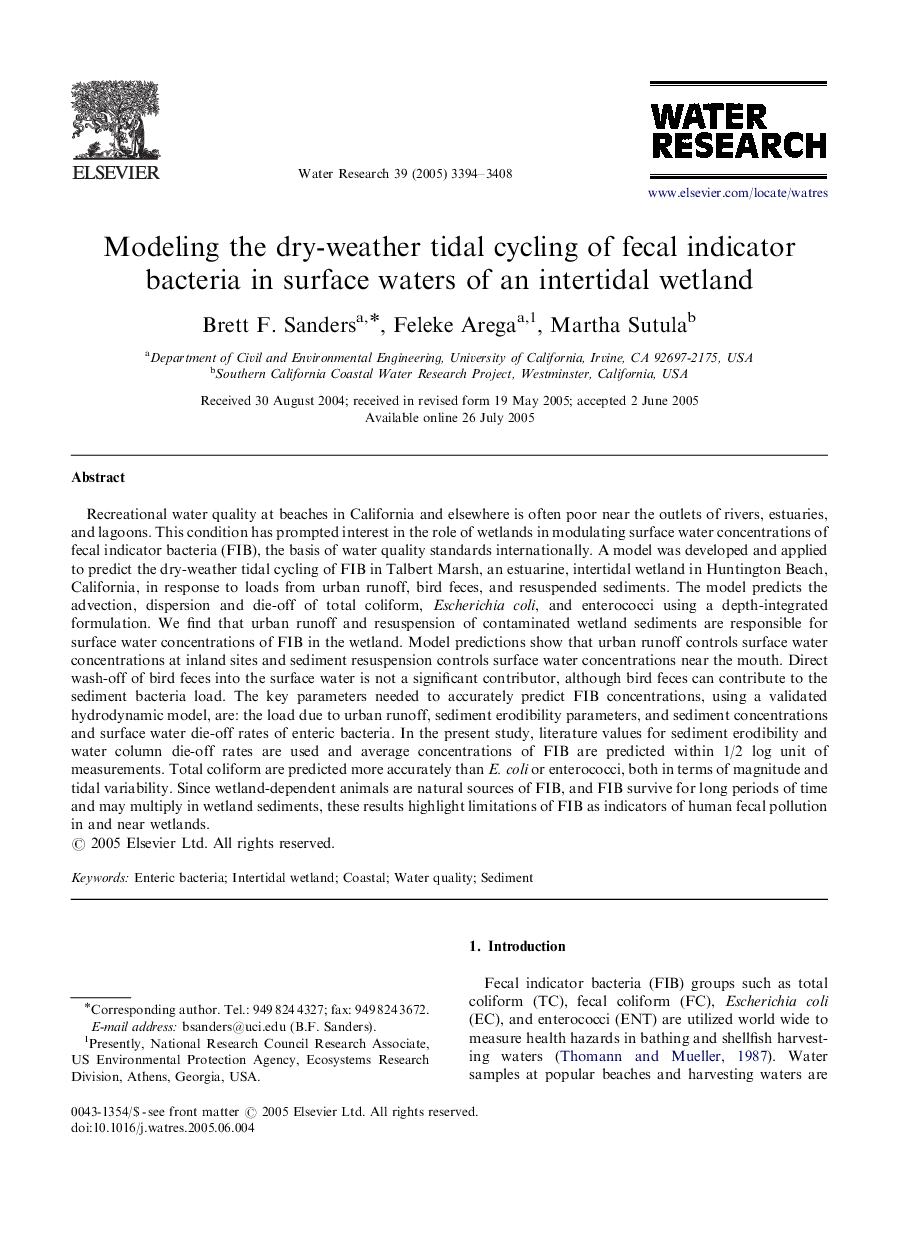| کد مقاله | کد نشریه | سال انتشار | مقاله انگلیسی | نسخه تمام متن |
|---|---|---|---|---|
| 4486966 | 1317006 | 2005 | 15 صفحه PDF | دانلود رایگان |

Recreational water quality at beaches in California and elsewhere is often poor near the outlets of rivers, estuaries, and lagoons. This condition has prompted interest in the role of wetlands in modulating surface water concentrations of fecal indicator bacteria (FIB), the basis of water quality standards internationally. A model was developed and applied to predict the dry-weather tidal cycling of FIB in Talbert Marsh, an estuarine, intertidal wetland in Huntington Beach, California, in response to loads from urban runoff, bird feces, and resuspended sediments. The model predicts the advection, dispersion and die-off of total coliform, Escherichia coli, and enterococci using a depth-integrated formulation. We find that urban runoff and resuspension of contaminated wetland sediments are responsible for surface water concentrations of FIB in the wetland. Model predictions show that urban runoff controls surface water concentrations at inland sites and sediment resuspension controls surface water concentrations near the mouth. Direct wash-off of bird feces into the surface water is not a significant contributor, although bird feces can contribute to the sediment bacteria load. The key parameters needed to accurately predict FIB concentrations, using a validated hydrodynamic model, are: the load due to urban runoff, sediment erodibility parameters, and sediment concentrations and surface water die-off rates of enteric bacteria. In the present study, literature values for sediment erodibility and water column die-off rates are used and average concentrations of FIB are predicted within 1/2 log unit of measurements. Total coliform are predicted more accurately than E. coli or enterococci, both in terms of magnitude and tidal variability. Since wetland-dependent animals are natural sources of FIB, and FIB survive for long periods of time and may multiply in wetland sediments, these results highlight limitations of FIB as indicators of human fecal pollution in and near wetlands.
Journal: Water Research - Volume 39, Issue 14, September 2005, Pages 3394–3408